The Story Of The Tie
It was a quiet Friday night and was going well until a tie was spotted at the neighboring table. Who was this person wearing a tie? It was Brian!
Did you know? - The necktie (or tie) is a long piece of cloth worn around the neck or shoulders, resting under the shirt collar and knotted at the throat. The modern necktie, ascot, and bow tie are descended from the cravat. Men and boys wear neckties as part of regular office attire or formal wear. Neckties can also be worn as part of a uniform (e.g. military, school and waitstaff). Neck ties are generally unsized, but may be available in a longer size. Variants include the bow tie, ascot tie, bolo tie, and the clip-on tie. Some people wear a tie as normal fashion wear.
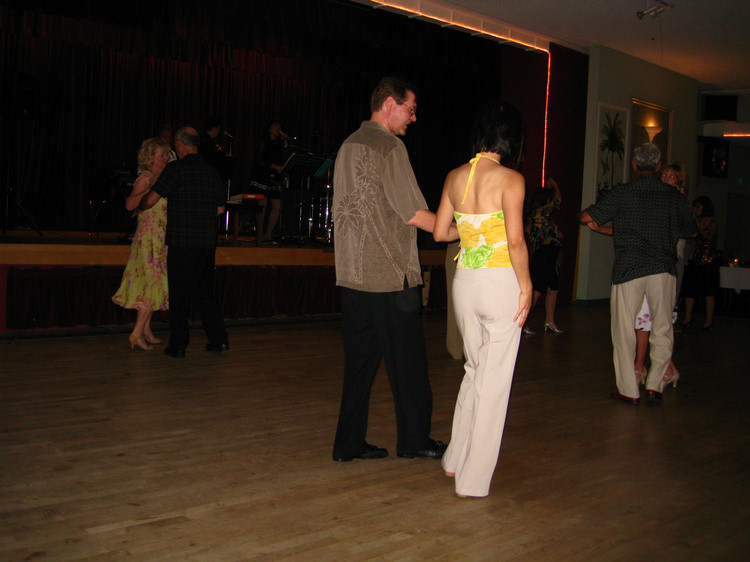
The dancing was going just fine for a while!

Twirling, whirling and kicking up our collective heels

Notice Brian on the right, hiding his shameful appearance. The tie is
lurking on the other side of the shirt!

Sue is beginning to worry as Paul left the table for scotch.... tape
Did you know? - The precursor to the current tapes was developed in the 1930s in Minneapolis, Minnesota by Richard Drew to seal a then-new transparent material known as cellophane. Although it is a trademarked brand name, it is sometimes used in the US and elsewhere as a generic term for transparent adhesive tape. The Scotch brand includes many different constructions of tape.
Use of the term "Scotch" in the name has a pejorative origin. To cut costs 3M applied the adhesive only to the edges of the tape. A remark was made by a St. Paul automobile detailer that the stingy Scotch bosses needed to put more adhesive on it. Scotty McTape, a kilt-wearing cartoon boy, was the brand's mascot for two decades, first appearing in 1944. The familiar plaid design, a take on the Wallace tartan, was introduced in 1945.
In 1953, Russian scientists showed that triboluminescence caused by peeling a roll of Scotch Tape in a vacuum can produce X-rays. In 2008, American scientists performed an experiment that showed the rays can be strong enough to leave an X-ray image of a finger on photographic paper.
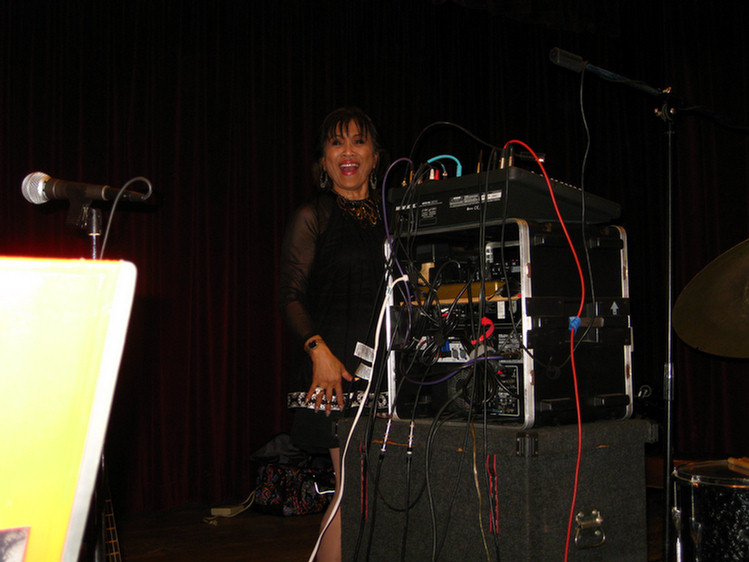
The Street Corner Symphony was terrific this evening... as usual!
But Then It Happened!
Paul created a new tie... A paper napkin tie! He saw that it was blank and this was bad! Innocent Donna was minding her own business when Paul burst upon the scene with the typical question one gets at a dance... "Do you have any crayons?" Being resourceful, Donna found a pen and the tie began to take shape!
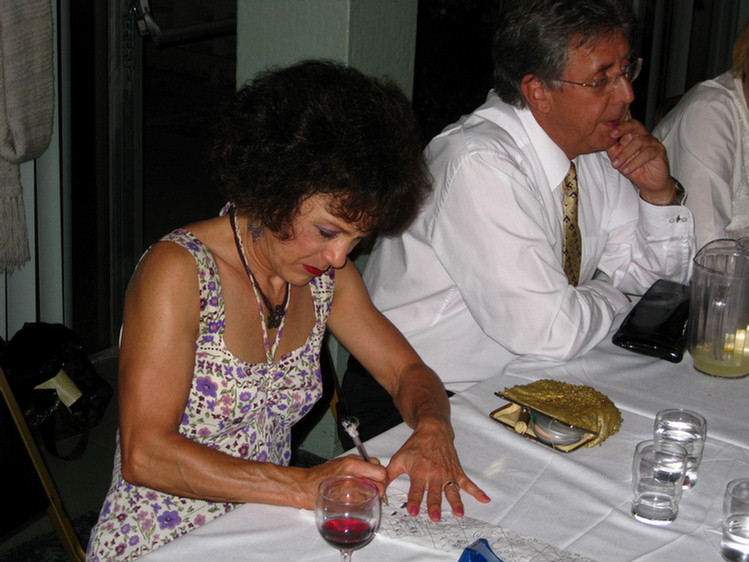
Brian just continues to wear this garment of undesirability... Soon that might
change!
Did you know? - The necktie can be traced back to the time of the Thirty Years' War (1618–1648) when Croatian mercenaries from the Military Frontier in French service, wearing their traditional small, knotted neckerchiefs, aroused the interest of the Parisians. Due to the slight difference between the Croatian word for Croats, "Hrvati", and the French word, "Croates", the garment gained the name "Cravat". The new article of clothing started a fashion craze in Europe where both men and women wore pieces of fabric around their necks. In the late seventeenth century, the men wore lace cravats that took a large amount of time and effort to arrange. These cravats were often tied in place by cravat strings, arranged neatly and tied in a bow.
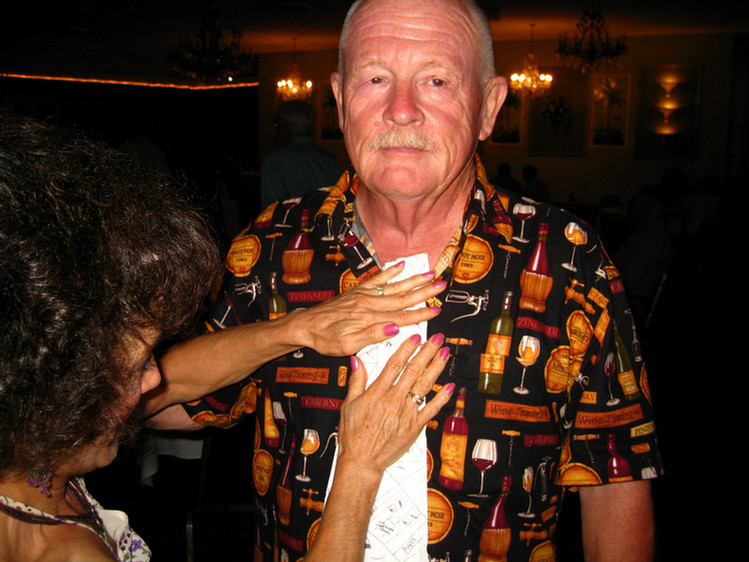
Time for a fitting
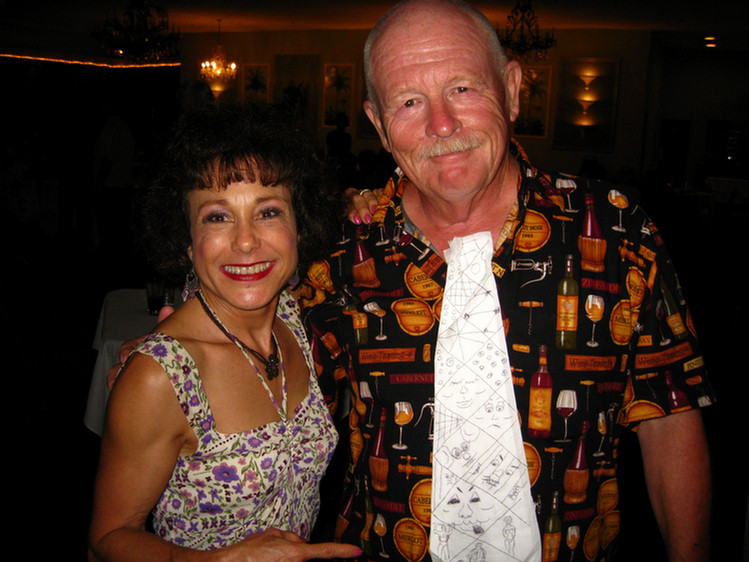
Ah.... Perfection!

A close-up is needed.... BTW, Brian did the last three at the bottom as he was a
technical illustrator in his previous life.
Neat technical illustrations, huh?
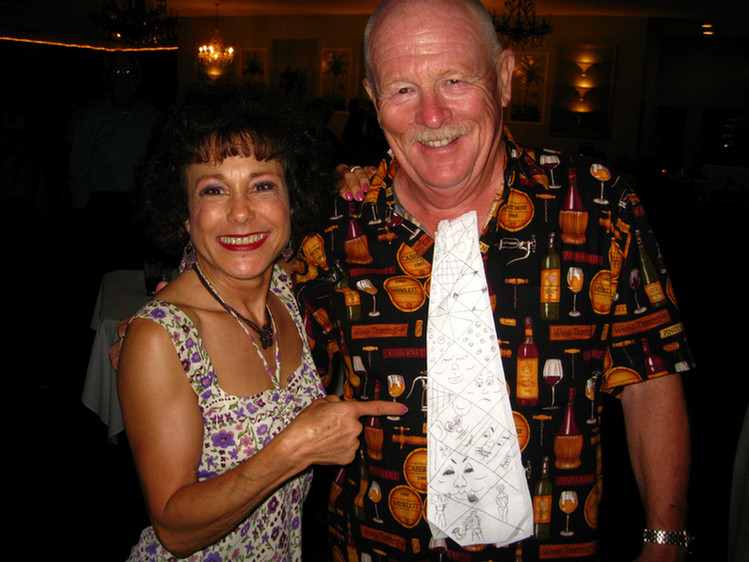
Donna is now getting warm to the idea of a new line of clothes.. The napkin
look!
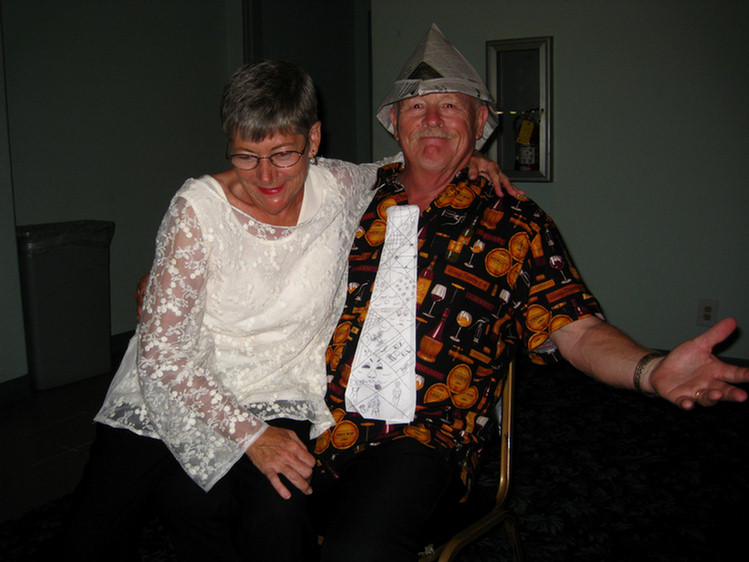
Vicky joined the activities by providing Paul with a paper hat. Sue is not
too sure about all this!

Now compare, Brian's original $17 tie to Paul's 2.3 cent tie... What would you
rather wear?
Did you know? - 1720–1800: Stocks, Solitaires, Neckcloths, Cravats
In 1715, another kind of neckwear, called "stocks" made its appearance. Stocks were initially just a small piece of muslin folded into a narrow band wound a few times round the shirt collar and secured from behind with a pin. It was fashionable for the men to wear their hair long, past shoulder length. The ends were tucked into a black silk bag worn at the nape of the neck. This was known as the bag-wig hairstyle, and the neckwear worn with it was the stock.
A variation of the bag wig would be[weasel words] the solitaire. This form had matching ribbons stitched around the bag. After the stock was in place, the ribbons would be brought forward and tied in a large bow in front of the wearer.
Sometime in the late eighteenth century, cravats began to make an appearance again. This can be attributed to a group of young men called the macaronis (of Yankee Doodle fame). These were young Englishmen who returned from Europe and brought with them new ideas about fashion from Italy. The French contemporaries of the macaronis were the Incroyables.
Like A New Dress, A Tie Needs he Proper Accessories

What a fashionable man would wear out on the evening to draw attention to the
Napkin Tie
The Band Is Wondering What Is Going On?
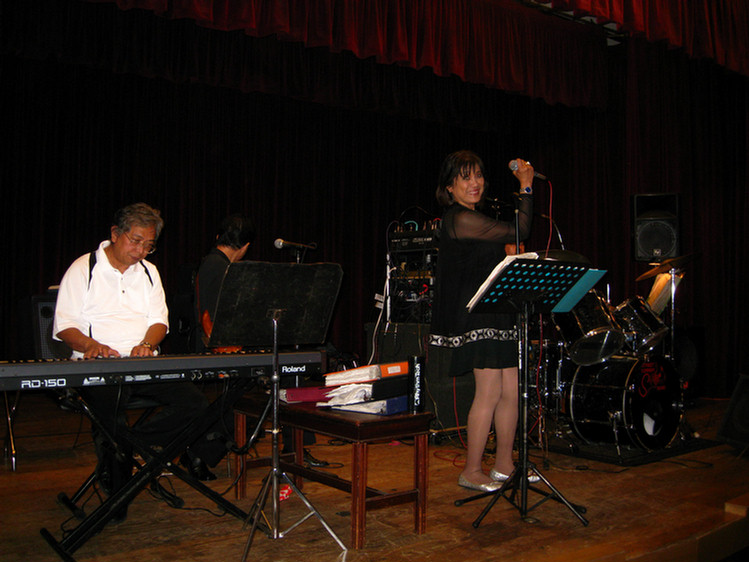
"Ok guys... enough with the ties, get back to dancing!"
Did you know? - 1860–1920s: Bow ties, Scarf/Neckerchief, the Ascot, the Long tie
The industrial revolution created a need for neckwear that was easy to put on, comfortable and would last an entire workday. The modern necktie, as is still worn by millions of men today, was born. It was long, thin and easy to knot and it didn’t come undone.
The English called it the “four in hand” because the knot resembled the reins of the four horse carriage used by the British upper class.[citation needed] By this time, the sometimes complicated array of knots and styles of neckwear gave way to the neckties and bow ties, the latter a much smaller, more convenient version of the cravat. In formal dinner parties and when attending races, another type of neckwear was considered de rigueur; this was the Ascot tie, which had wide flaps that were crossed and pinned together on the chest.
This was until 1926, when a New York tie maker, Jesse Langsdorf came up with a method of cutting the fabric on the bias and sewing it in three segments. This technique improved elasticity and facilitated the fabric's return to its original shape. Since that time, most men have worn the “Langsdorf” tie. Yet another development of that time was the method used to secure the lining and interlining once the tie had been folded into shape. Richard Atkinson and Company of Belfast claim to have introduced the slipstitch for this purpose in the late 1920s.
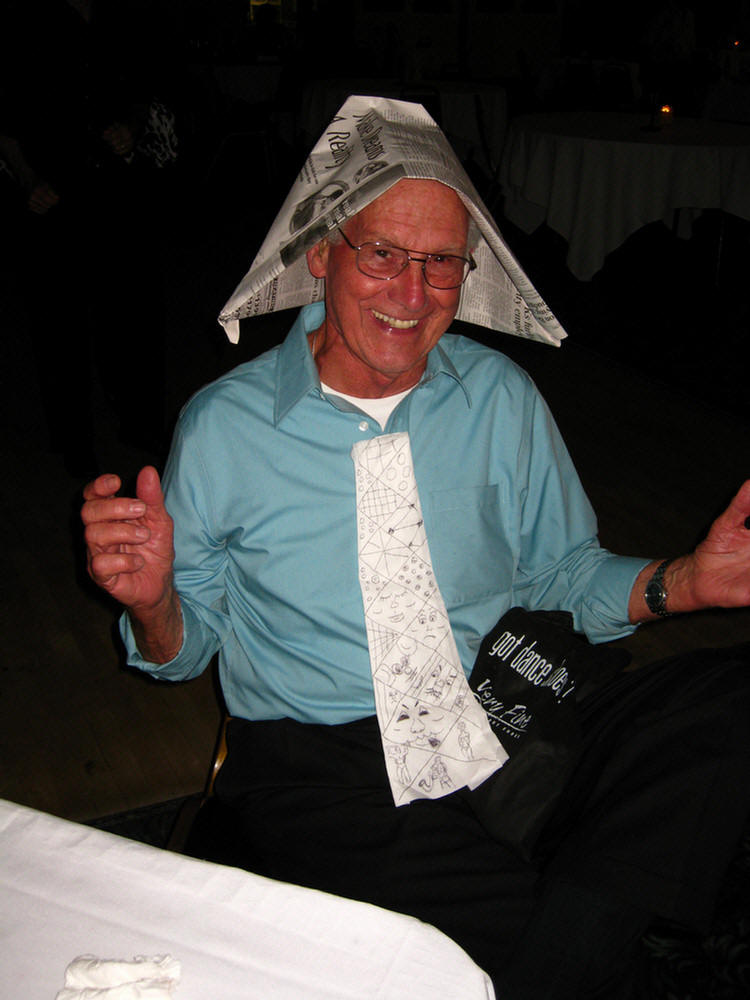
Del is also a fashion plate and modeled for the crowds
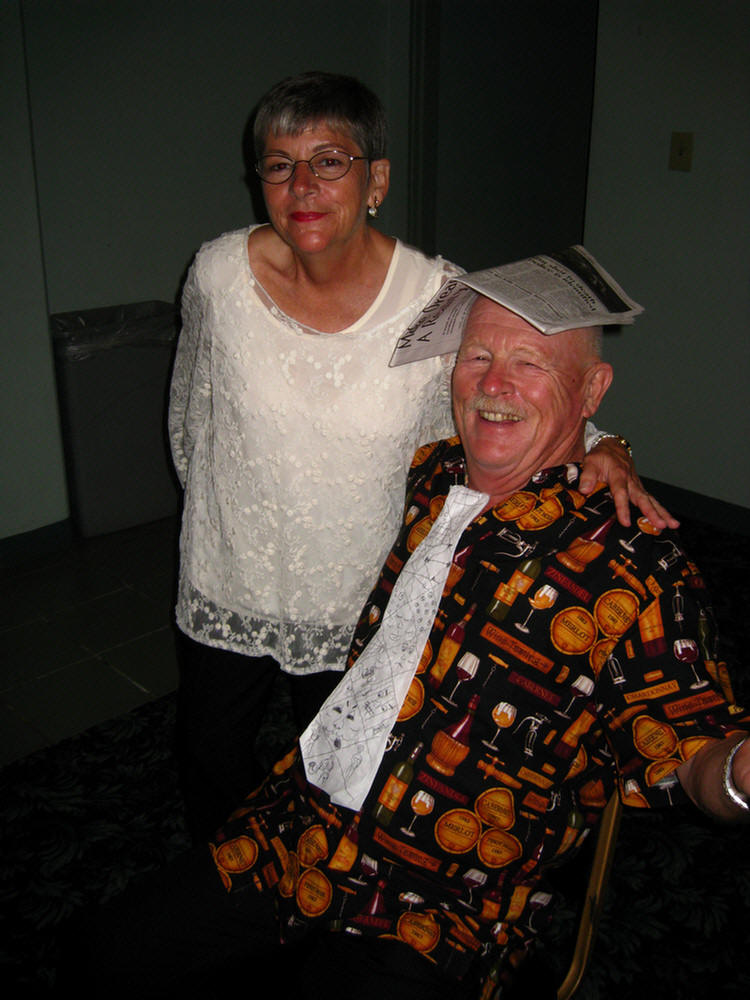
The newspaper is NOT part of the new ensemble... It is there to keep the camera
flash from reflected
onto the dance floor from the bald head!
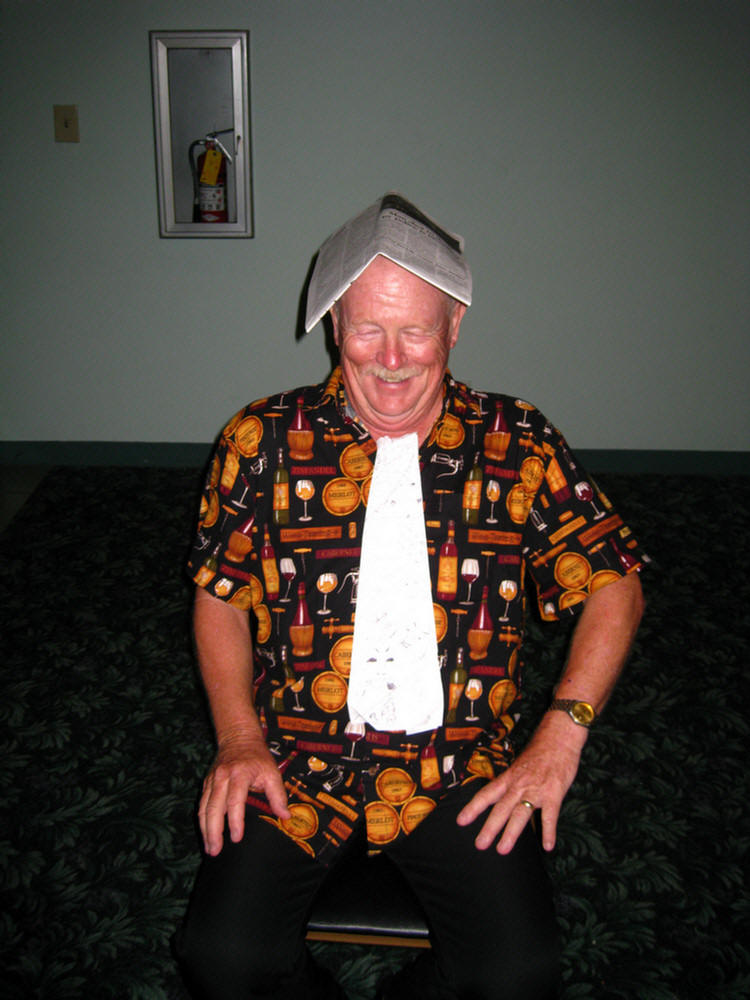
Magnificent!
Did you know? - 1920s–present day
After the First World War, hand-painted ties became an accepted form of decoration in America. The widths of some of these ties went up to 4.5 inches (110 mm). These loud, flamboyant ties sold very well all the way through the 1950s.
In Britain, Regimental stripes have been continuously used in tie designs since the 1920s. Traditionally, English stripes ran from the left shoulder down to the right side; however, when Brooks Brothers introduced the striped ties in the United States around the beginning of the 20th century, they had theirs cut in the opposite direction.
Before the Second World War ties were worn shorter than they are today. Around 1944, ties started to become not only wider, but wilder. This was the beginning of what was later labeled the "Bold Look;" ties which reflected the returning GIs' desire to break with wartime uniformity. Widths reached 5", and designs included Art Deco, hunting scenes, scenic photographs, tropical themes, and even girlie prints. Typical length was 48".
The Bold Look lasted until about 1951, when the "Mister T" look (so termed by Esquire magazine), was introduced. The new style, characterized by tapered suits, slimmer lapels, and smaller hat brims, included thinner and not so wild ties. Tie widths slimmed to 3" by 1953 and continued getting thinner up until the mid-1960s; length increased to about 52". Through the 1950s, neckties remained somewhat colorful, yet more restrained the previous decade. Small geometric shapes were often employed against a solid background; diagonal stripes were also popular. By the early 1960s, dark, solid ties became very common, with widths slimming down to as little as 1".

No contest, the Napkin obviously wins hands down! Right?

The guilty party, the artistic creator and the troublemaker... Which one is
which?
The Artist Responsible For The Tie Decorations Knows She Has a Hit!
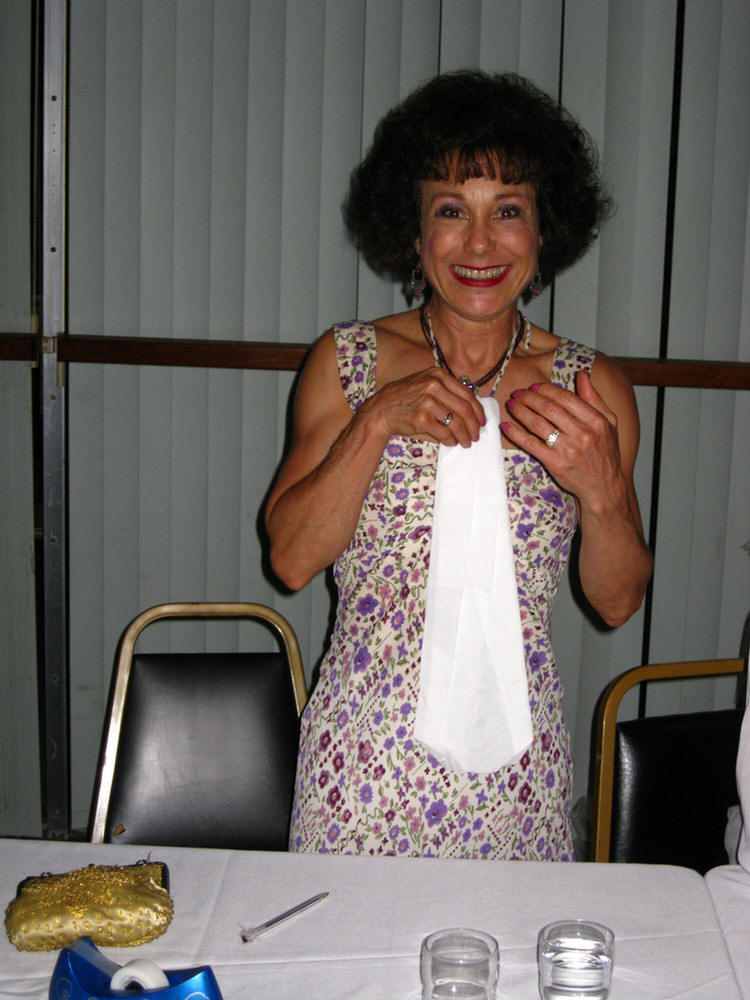
The instrument used to decorate the tie is still hot and laying on the table in
wait for the next napkin!
A Page From Neckclothitania Showing Different Cravat Knots
The book was published around 1820 in order to instruct the men on how tie their cravats. We need to take up a collection for Brian!

Brian will demonstrate all of these if he EVER shows up with a tie again!!!
Did you know? - In Israel, a society whose founders espoused egalitarian, socialist principles, casual-dress remains the everyday norm and the necktie is still largely shunned even by professionals like doctors and lawyers.[15] Interestingly, this practice may actually have practical, medical side-effects. A recent study found that tie-less Israeli doctors actually spread fewer germs than their foreign colleagues.
An extreme example of anti-necktie sentiment is found in Iran, whose theocratic rulers have denounced the accessory as a decadent symbol of Western oppression. In the late 1970s (at the time of the Islamic Revolution) members of the US press even metonymized Iran's hardliners as turbans and its moderates as neckties. To date, most Iranian men have retained the Western-style long-sleeved collared shirt and three-piece suit, while excluding the necktie.
Neckties are viewed by various sub and counter culture movements as being a symbol of submission and slavery (ie having a symbolic chain around ones neck) to the corrupt elite of society, as a "wage-slave".
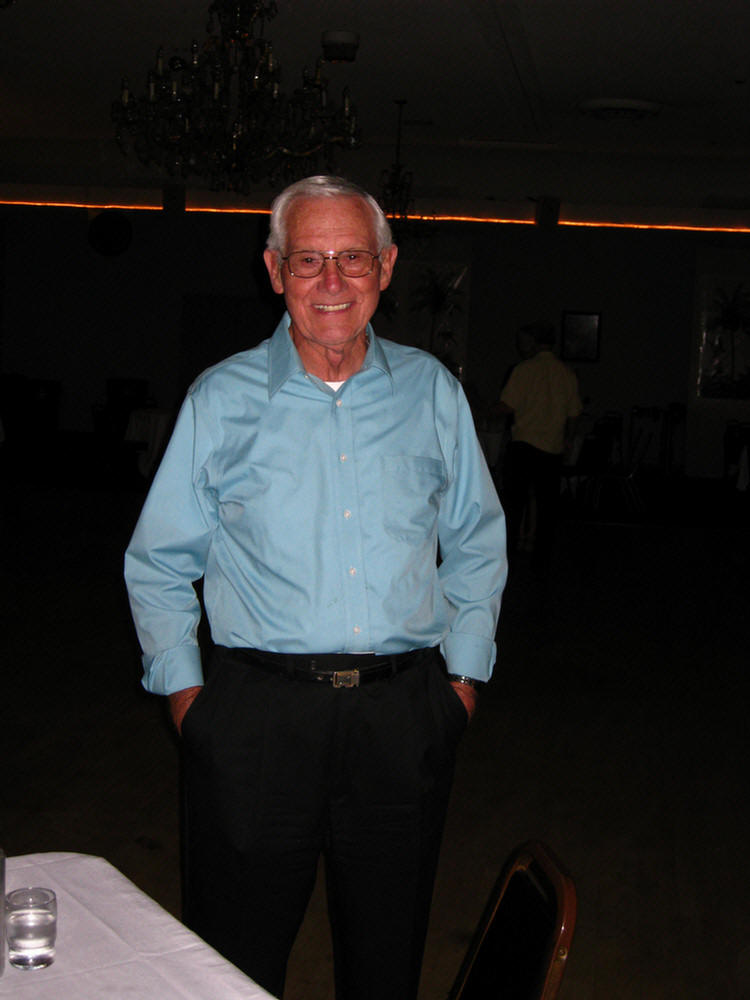
Time to go home so the tie must be put away until another day!
Vicky Saves The Day With Her View Of The World!


See, they really do dance at a dance!
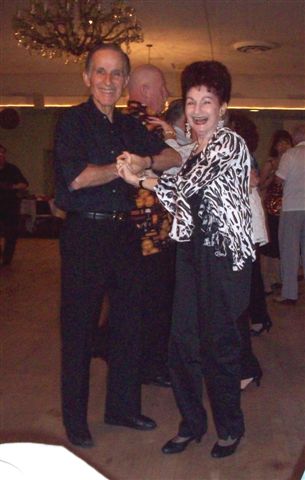
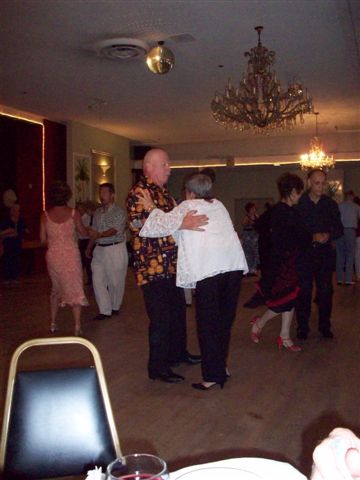
Lee and Marsha heating up the floor while Paul prepares Sue to launching into
the air
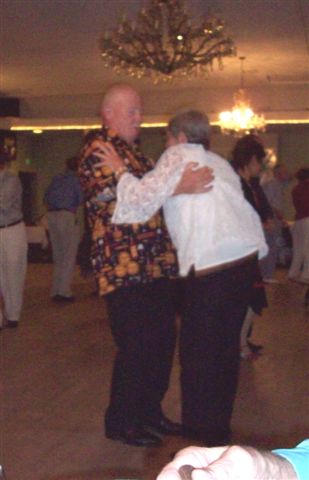

Worry time, he has only had two drinks!

Paul sings a romantic tune to Sue thinking the new Napkin Tie will be
totally irresistible!


About the wine... It's really grape juice!

Paul recalls the story of Spike Jones and the Chinese Mule Train. This is
his Geisha Girl impression!
Did you know? - Lindley Armstrong "Spike" Jones (December 14, 1911 – May 1, 1965) was a popular musician and bandleader specializing in performing satirical arrangements of popular songs. Ballads and classical works receiving the Jones treatment would be punctuated with gunshots, whistles, cowbells and ridiculous vocals. Through the 1940s and early 1950s, the band recorded under the title Spike Jones and his City Slickers and toured the USA and Canada under the title The Musical Depreciation Revue.
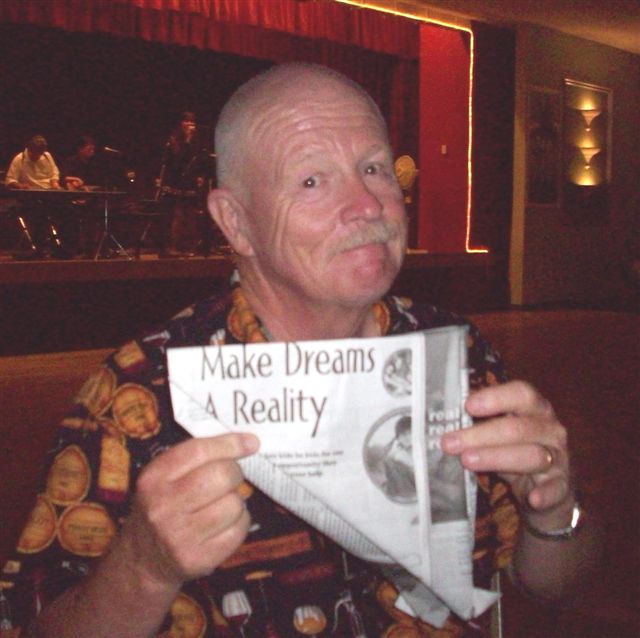
That was not a dream! It was a nightmare!
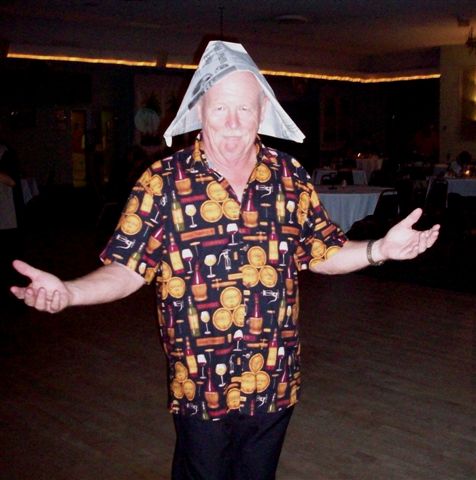
What can I say?
When Del Found Out He Was On The Internet...


"Oh the shame of it all!... But, I do love the tie!"

Yup!

What will Brian wear next???